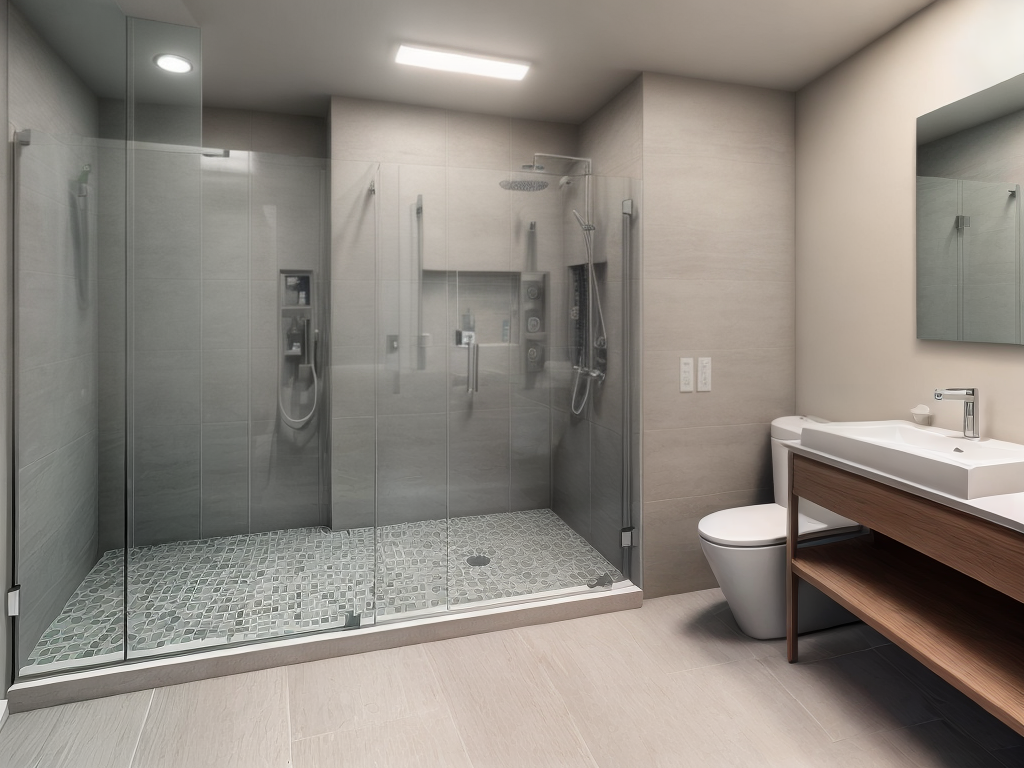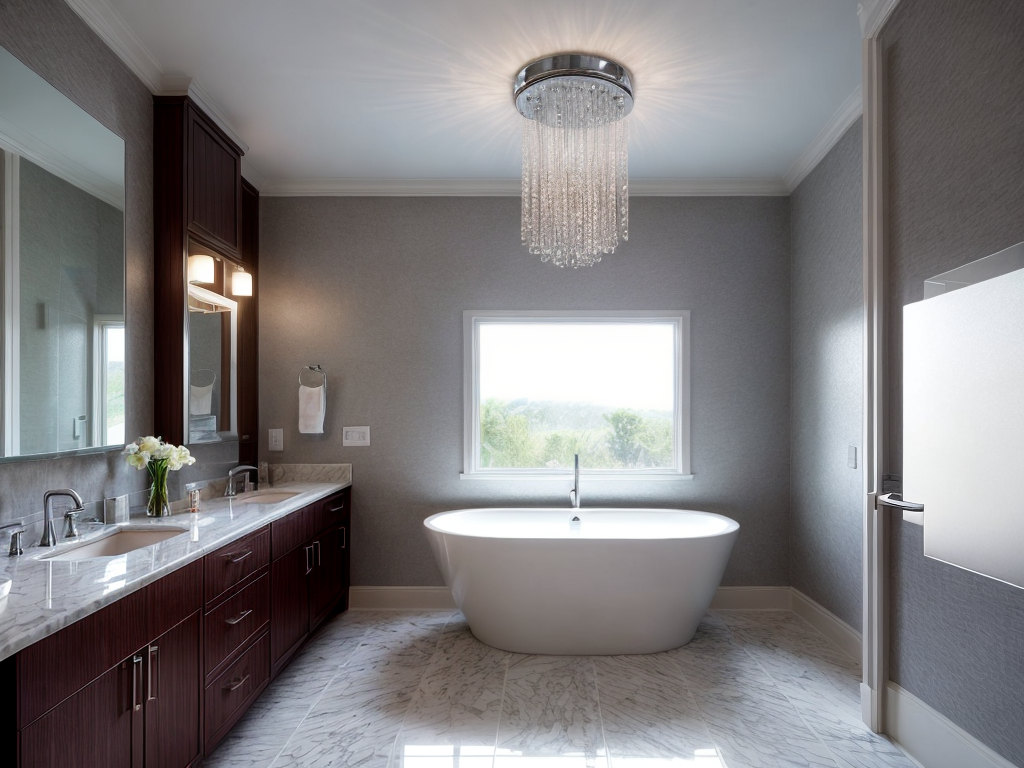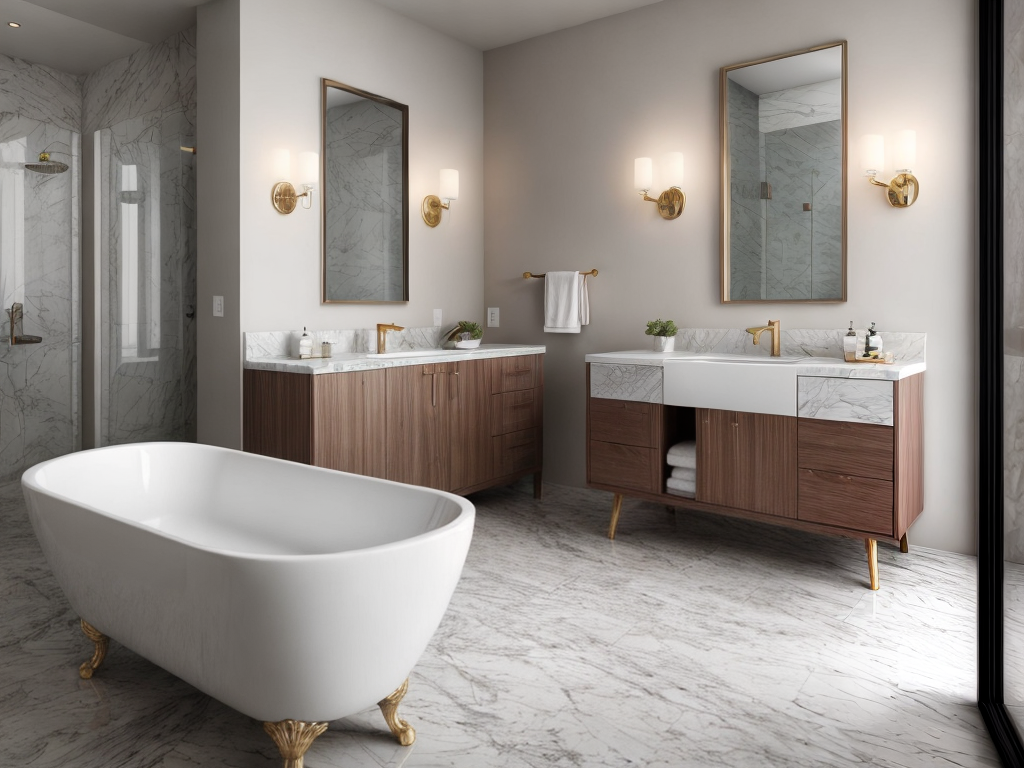Welcome to our ultimate guide to DIY bathroom redesign! If you’re looking to transform your bathroom into a stylish and functional space without breaking the bank, you’ve come to the right place. In this comprehensive guide, we’ll share cost-saving strategies, pro tips, and expert advice to help you tackle your bathroom renovation project like a pro. Let’s dive in!
Assessing Your Needs and Setting a Budget
Before embarking on a bathroom redesign project, it’s important to assess your needs and set a realistic budget. Consider the following factors:
- Functionality: Determine how you use your bathroom and what improvements you need. Do you need more storage space, better lighting, or a larger shower area?
- Style: Decide on the overall style and aesthetic you want to achieve. Consider factors such as color schemes, fixtures, and materials.
- Budget: Set a budget that aligns with your financial resources. Consider both the cost of materials and any professional help you might need.
Planning Your Bathroom Redesign
Proper planning is key to the success of any DIY project. Take the following steps to ensure a smooth renovation process:
Step 1: Measure and Assess the Space
Start by measuring your bathroom and noting down any existing fixtures, plumbing lines, and electrical outlets. This will help you determine the layout and identify any potential challenges.
Step 2: Create a Design Plan
Use design software or simply sketch out your ideas on paper. Consider the placement of fixtures, storage solutions, and any additional features you want to incorporate. This will give you a clear vision of the final result.
Step 3: Research and Source Materials
Research different suppliers and compare prices to find the best deals on materials. Consider factors such as durability, ease of installation, and maintenance requirements. Look for cost-effective alternatives that still offer quality and style.
Step 4: Obtain Necessary Permits
Depending on the extent of your renovation, you may need to obtain permits from your local authorities. Check the regulations and requirements beforehand to avoid any legal issues down the line.
Demolition and Preparation
Once you have your design plan in place and all necessary materials on hand, it’s time to roll up your sleeves and start the demolition and preparation process.
Step 1: Clear the Space
Remove all existing fixtures, fittings, and accessories from your bathroom. Store them safely in a separate area or consider donating them if they are still in good condition.
Step 2: Prep the Walls and Flooring
Inspect the walls and flooring for any damages or repairs needed. Patch up any holes or cracks, and ensure the surfaces are clean and smooth before proceeding.
Step 3: Install New Plumbing and Electrical Fixtures
If you’re planning to relocate or upgrade your plumbing or electrical fixtures, consult with a professional to ensure proper installation. This will help prevent any future issues and ensure your bathroom functions efficiently.
DIY Bathroom Redesign: Cost-Saving Strategies
Now that you’ve completed the initial preparation, it’s time to dive into the actual bathroom redesign. Here are some cost-saving strategies to keep in mind:
1. Opt for Affordable Materials
Instead of splurging on expensive materials, consider cost-effective alternatives that still offer style and durability. For example, choose porcelain tiles over natural stone or use laminate countertops instead of granite.
2. Repurpose Existing Fixtures
If your existing fixtures are still in good condition, consider repurposing them instead of purchasing new ones. A fresh coat of paint or new hardware can give them a whole new look without breaking the bank.
3. DIY Painting and Wallpapering
Painting or wallpapering your bathroom walls can instantly transform the space. These are DIY-friendly tasks that can save you money on professional labor costs. Just make sure to choose moisture-resistant products suitable for bathrooms.
4. Refinish Instead of Replacing
If your bathtub or shower is in good condition but looks worn out, consider refinishing instead of replacing. This can be a more affordable option and will give your bathroom a fresh, updated look.
5. Update Fixtures and Accessories
Replacing outdated fixtures and accessories, such as faucets, towel racks, and lighting fixtures, can make a significant difference in the overall appearance of your bathroom. Look for affordable options that match your desired style.
6. DIY Tile Installation
Tile installation can be a costly endeavor if you hire professionals. Consider learning how to install tiles yourself by following online tutorials or taking a local workshop. This can save you a significant amount of money while still achieving professional-looking results.
7. Learn Basic Plumbing and Electrical Skills
Having some basic plumbing and electrical skills can come in handy during a bathroom redesign. Learning how to handle small repairs and installations can save you money on hiring professionals for minor tasks.
Conclusion
Congratulations! You’ve reached the end of our ultimate guide to DIY bathroom redesign. Armed with cost-saving strategies, pro tips, and expert advice, you’re well-equipped to tackle your bathroom renovation project. Remember to plan carefully, source affordable materials, and consider repurposing existing fixtures to save money. With some creativity and DIY skills, you can transform your bathroom into a beautiful and functional space without breaking the bank. Happy renovating!



